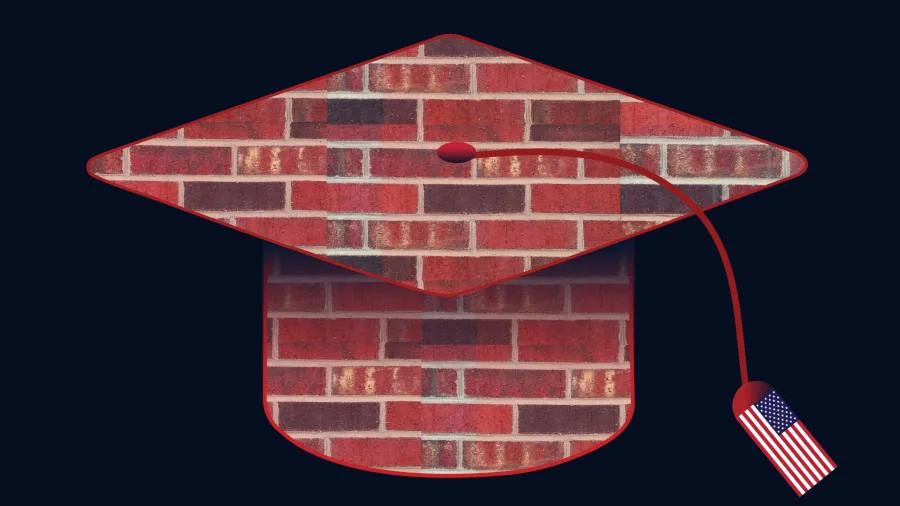
Another week, another wave of bitter controversy about American education. Four weeks after the Supreme Court sparked furore by banning affirmative action in university admissions, the education department opened a civil rights investigation into Harvard University’s admission policy. This followed allegations that a preference for the relatives of alumni and donors discriminates against black, Hispanic and Asian applicants.
Cue a wave of parental — and political — angst that will undoubtedly intensify as the next round of university applications loom, along with the 2024 presidential election.
But if you want another perspective on the saga, it is worth looking at a tale that has quietly unfolded over years in a different setting: public high schools in Silicon Valley districts such as Cupertino, where Apple has its headquarters.
Almost two decades ago, reports emerged there about so-called “white flight” or the departure of Caucasian families. But this was not the type of exodus seen in the early to mid-20th century, when white families fled neighbourhoods after African-American or Hispanic families moved in — because of their racism and a fear of crime and falling house prices.
Instead, the reports suggested that white parents were pulling their offspring out of public schools in these Californian suburbs because they feared that they would be outperformed by Asian-American children.
At the time, these politically sensitive tales were downplayed by local officials; Steve Rowley, a Californian school superintendent, insisted that there was “relatively little” factual proof of such flight. But this month a trio of economists — Leah Platt Boustan, Christine Cai and Tammy Tseng — published the first extensive, data-driven study of the issue. And this concludes that the tales of “white flight” were indeed true.
Most notably, after crunching population, economic and school enrolment data in high socio-economic status Californian suburbs between 2000 and 2016, they argue that the arrival of each new Asian student was correlated with the departure of 0.6 white students. And when adjusted for demographic factors, “on average, the arrival of one Asian student in a suburban school district leads to the departure of 1.5 white students”. They note that this “rate of white flight that is somewhat lower but not too dissimilar from flight from black/Hispanic populations documented in different settings”.
Of course, this pattern could have multiple reasons, not least because of wider problems in America’s public school system. But the factors that sparked “white flight” from African-American and Hispanic incomers — namely racism, crime and house prices — do not seem to be to blame. High socio-economic status (SES) areas have low crime and high house prices. And while separate research by experimental psychologists suggests that white families do sometimes see Asian-Americans as “a foreign cultural threat” in other US locations, the economists see little evidence of overt hostility in Cupertino.
Instead, they point to education as a possible reason for the flight: white parents wanted to use public schools in other districts, where their children could come top of the class, and thus have more chance of entering California universities, which emphasise class order in admissions.
“Asian arrivals lead to test score gains for the full student body in these high-SES districts, but do not boost most measures of test scores for white students,” the authors note. “The learning of white students appears unaffected [by immigration] but the relative performance in the class for the average white student would fall with Asian entry . . . raising parental concerns about competition.”
This is unlikely to elicit much sympathy from the wider American public, given that the “fleeing” families are probably fairly elite — and white kids already have better educational outcomes than Hispanic and African-American families in California.
But this pattern is striking for at least three reasons. First, it shows how confusing and unhelpful the “minority” tag is today, since it is not always synonymous with disadvantage; economic differentials are more important. Indeed, Asian-American plaintiffs initially participated in the lawsuit that culminated in last month’s Supreme Court ruling, since they felt universities were discriminating against them. (Sixty-four per cent of Asian Americans oppose considering race in college admissions).
Second, the saga also underscores how the racial angst gripping American universities starts at a young age, since high school rankings shape admissions. And that leads to a third point: it is hellishly difficult to create a “fair” and “diverse” educational system when smart parents are so adept at arbitrage.
Of course, in theory, everyone should be delighted by the presence of super-smart children of any race in their public schools. But parents can also sense that future competition for elite jobs will get more, not less, intense — not least because separate inequality research shows the wage premium for so-called “abstract cognitive” jobs, compared with routine cognitive occupations, has risen from 1.5 to 1.9 times in the past 50 years.
In that sense, then, the fact that this pattern erupted in the suburbs around the Apple headquarters is all too symbolic. It is a foretaste of the tensions that will keep poisoning the politics of American education for a long time.

